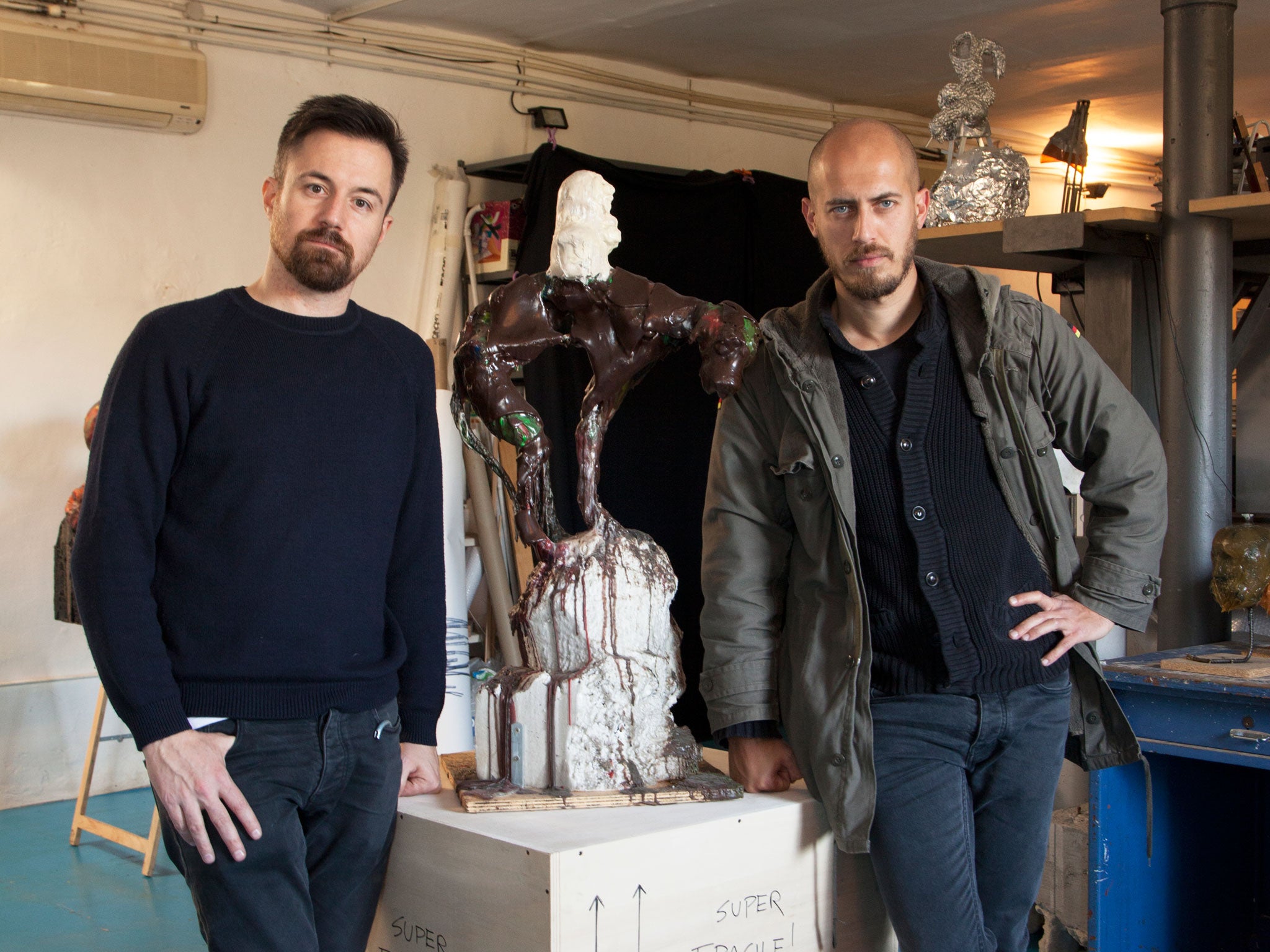Alis/Filliol, sculptors: 'We work blind. For us it is a way to surprise ourselves, to keep ourselves interested'
Karen Wright meets the artistic duo at their studio in Rivoli, a small town outside of Turin

Alis/Filliol is an artistic duo of Davide Gennarino and Andrea Respino. They found their current studio in Rivoli, a small town outside of Turin in 2011. The two first met while studying sculpture at the Accademia Albertina delle Belle Arti in Turin.
This impressive space, a former flour mill, now produces electricity and also houses an eclectic mixture of musicians, designers and a drum-maker, among others. It is one of the most beautiful spaces I have ever visited, with its views towards the Alps and the river that powers through nearby. "The studio helps because it's a place where we could both find a lot of materials, and use those materials."
Gennarino and Respino are both bearded but Gennarino is taller, fairer and slightly younger (born in Pinerolo, Italy, in 1979). He is also the more outgoing, acting as spokesperson of the two – all the quotes used here are his. Respiro was born in Mondovi, Italy in 1976. They took the surnames of their mothers to form their artistic alias. "Because it's another way to look at society – the opposite of the patriarchal lineage."
The pair became friends at the academy as neither was interested in the classical way sculpture was taught. At the time they were making films and installations. They started to make their impressive sculpture together when they left the academy "because we have the same taste". They discuss the ideas before they make the work together; "for us, the sculpture is the solidification of our communication". Their sculptures have won them rapid recognition, including as finalists of the Furla Art Award in 2011, and shows at the Fondazione Sandretto re Rebaudengo, GAM and the Venice Biennale of 2015.
We enter first into an external space dominated by a huge wooden box containing black burnt soil, a byproduct from the foundry that is coincidentally near their homes. They climb into it for the photographer, saying they are often standing in it creating the moulds and pouring in polyurethane. "We work blind. For us, it's a way to surprise ourselves, keep ourselves interested." They appreciate the blackness, using it to coat their impressive sculptures and also to breathe new life into a useless material.
The duo also has a space within the old mill itself, with a breathtaking view of the mountains and the river. They are quick to point out "we are not partners in life, but this is important because it's not love".
Gennarino points out that the other inhabitants of the mill also become part of their community, providing muscle and technical assistance when needed. "It's a bit of a paradox since we are two and it's not just one person working… a little community. We are not a family, we are community – it's different."
Join our commenting forum
Join thought-provoking conversations, follow other Independent readers and see their replies
Comments